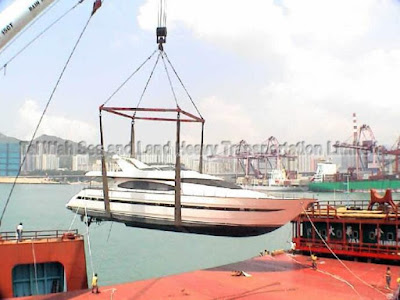Is Your Business Exporting? Here’s How to Reduce Clearance Delays (And Frustration)

Here is a scenario: your e-commerce operations have been rising on a wave of interest from international buyers. To keep up the momentum — and keep your global customers happy – you need your exports to arrive quickly and safely in their destination countries, and more importantly, in the hands of your clients.
But as the number of transactions grows, delivery delays are creeping into the picture, caused mostly by confusion about complex and changing Customs requirements, as well as recurring problems with border clearance documentation. You are frustrated. Your team is frustrated. And your customers are considering taking their business elsewhere.
Fortunately, there are specialists and resources available to help, and specific steps you can take to keep your products moving efficiently. With fewer in-house staff available to manage documentation requirements and compliance with Customs rules, small businesses need to pay particular attention to some basic border clearance strategies. They also they need to rely on a trusted shipping partner and other expert assistance, like export/import guidance offered by the U.S. Customs and Border Protection (CBP).
Following are key areas where your company can focus to avoid Customs delays:
1. Automation
While technology is fueling a new era of global trade through e-commerce, it is also finally beginning to support a modernized approach to complex border clearance issues.
CBP has launched the Automated Commercial Environment (ACE), and will soon deploy its final core trade processing capabilities. The trade automation system consolidates and streamlines the export and import process, providing a single window for entry processing, cargo release and export processing.
Other nations are implementing – or are already employing – automation processes as well, and coordination and cooperation between CBP and agencies around the world should improve significantly in the future.
2. Shipping Documents
To move your goods internationally, you need to understand exactly what documentation is needed. Your Customs invoice contains all the relevant information about your shipment, and it is the key to transit for your goods. Without it, your goods will not leave the country; if the invoice is unclear or inaccurate, you can expect significant delays with clearance out of the U.S. and/or into your destination country. So the first rule for efficiency at the border is to prepare your invoices carefully, typing them clearly and allowing sufficient space between the lines. Make sure to keep the data on the document within the correct column.
Next, the content description that you provide for your shipment must be detailed and accurate, containing all the information that would be shown on a well-prepared packing list. For instance, if you are shipping computer parts, it is not enough to simply note this in the description; you must also include the brand name, model, and serial numbers of the parts. Mark your goods legibly and conspicuously with the country of origin unless they are specifically exempted from country-of-origin marking requirements. Be sure to include any other marking that may be required by the marking laws of your destination country.
Also, your documentation must be complete, which means that values and quantities of goods must be included, and all applicable invoice pages must be attached. You will need to pay attention to the product code. All too often, the incorrect product code is included, leading to delays in Customs. Make sure your invoice or description is in English, and make sure that your goods are correctly valued, with accurate quantities indicated; goods that are deliberately under-valued to avoid duties or taxes will be delayed. Note also that if you are shipping textiles, samples must be prepared properly.
3. Special Requirements by Country
It is critical that you follow all the requirements of your destination country. There may be unique laws and regulations that apply, such as those relating to the transport of food, drugs, cosmetics, medical items, and others. Observe any special instructions with respect to invoicing, packaging, labeling, and as mentioned above, marking. At DHL, we work closely with our customers to ensure that all of these individual rules are understood and met.
4. Shipper and Consignee Information
Often, shipments are delayed because shipper or consignee information is incomplete. If a carrier must spend time determining the address for the recipient of your goods, you will certainly hear about it from your unhappy customer. So, make sure the delivery address information is accurate and complete.
5. Importing at the Destination Country
Your shipment can be delayed at its destination country at the time of clearance in order to collect duties owed to Customs. To avoid this delay, it is best to send your shipments as DDP (Delivered Duty Paid). To make costs transparent to your customers and to make the process as efficient as possible, you can add a fully landed cost calculator to your website at checkout, allowing international shoppers to find out what they must pay up front in terms of duties and taxes.
The Customs process is complex, and requirements differ from country to country. Your shipments need not be delayed, however, if you focus on accuracy, detailed descriptions, and complete documentation each and every time you ship. In fact, eighty percent of delayed shipments can be linked to missing consignee information, poor descriptions, or incomplete information.
To help you on your global mission, DHL offers an online tool, Trade Automation Service, which lets you estimate duties, taxes and other import fees upfront; ensure product compliances; compare costs and compliance for multiple countries; create trade documents; and search for code classifications.
Source: https://goglobal.dhl-usa.com/blog/dhl/is-your-business-exporting-heres-how-to-reduce-clearance-delays-and-frustration/


Comments
Post a Comment